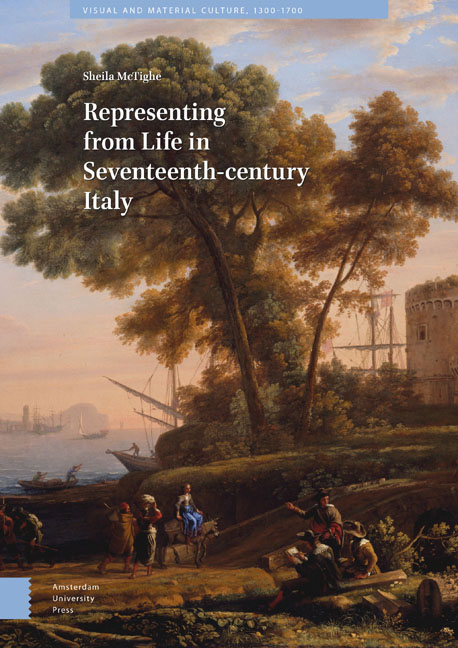Book contents
- Frontmatter
- Acknowledgements
- Contents
- Illustration List
- Introduction: Depicting from Life
- 1 Caravaggio’s Physiognomy
- 2 Jacques Callot, Drawing Dal Vivo around 1620: Commerce in Florence, Piracy on the High Seas
- 3 Jacques Callot’s Capricci di varie figure (1617): The Allusive Imagery of the Everyday, Represented ‘from Life’ and Emulating a Text
- 4 The Motif of the Shooting Man, and Capturing the Urban Scene: Claude Lorrain and the Bamboccianti
- 5 The Absent Eyewitness: the Revolt of Masaniello and Depiction Dal Vivo in the Middle of the Seventeenth Century
- Conclusion
- Index
4 - The Motif of the Shooting Man, and Capturing the Urban Scene: Claude Lorrain and the Bamboccianti
Published online by Cambridge University Press: 21 November 2020
- Frontmatter
- Acknowledgements
- Contents
- Illustration List
- Introduction: Depicting from Life
- 1 Caravaggio’s Physiognomy
- 2 Jacques Callot, Drawing Dal Vivo around 1620: Commerce in Florence, Piracy on the High Seas
- 3 Jacques Callot’s Capricci di varie figure (1617): The Allusive Imagery of the Everyday, Represented ‘from Life’ and Emulating a Text
- 4 The Motif of the Shooting Man, and Capturing the Urban Scene: Claude Lorrain and the Bamboccianti
- 5 The Absent Eyewitness: the Revolt of Masaniello and Depiction Dal Vivo in the Middle of the Seventeenth Century
- Conclusion
- Index
Summary
Abstract
In his early career, the Lorrenese painter Claude Lorrain was immersed in the society of Northern artists in Rome. Joachim van Sandrart later claimed it was he who taught Claude to sketch from life in the Campagna around Rome. In Claude's View in Rome with Trinità dei Monti he applies this lesson to painting an urban scene viewed from his house. The sketches for this view reveal Claude's use of a verbal-visual pun for the term ‘tirer au vif,’ tracing from life. The shared perspective structures used by Claude and his friends, Dutch and Flemish followers of Pieter van Laer, support the notion that even Claude's later Arcadian landscapes were grounded in a particular notion of depicting from life.
Keywords: Accademia di San Luca, Bentveughels, costruzzione legittima, bifocal perspective, visual puns
A small painting by Claude Lorrain, dated 1632, is generally described as painted dal naturale, from life (Fig. 64). It represents a scene that was visible from Claude's house on Rome's via Margutta, up the slope that was later to become the Spanish Steps, toward the church of Sta. Trinita dei Monti and the streets between the Pincio and the Quirinal hills. A preparatory drawing for the painting depicts the upper part of this view with its recognizable topography (Fig. 65). However, in a dark lower corner, Claude's painted composition flows seamlessly into a low-life scene of prostitutes with their clients. These figures perform their transactions in front of a ruined temple and antique sculpture. Evocative of ancient Rome, the setting is nonetheless entirely out of place in Claude's neighbourhood. This darkened area forms a counterpoint to the actual topography, an eruption of imagination into a scene that was otherwise meticulously observed from life.
Ancient and modern Rome, the real and the imagined, religious buildings and immoral actions, give the sense of juxtaposed registers and differing modes of address to the viewer.
- Type
- Chapter
- Information
- Representing from Life in Seventeenth-century Italy , pp. 179 - 220Publisher: Amsterdam University PressPrint publication year: 2020



